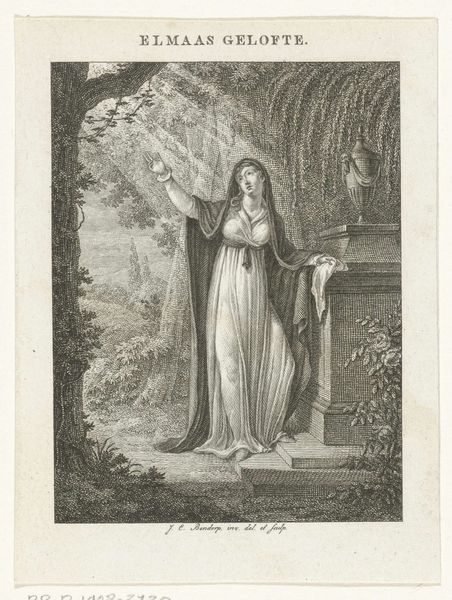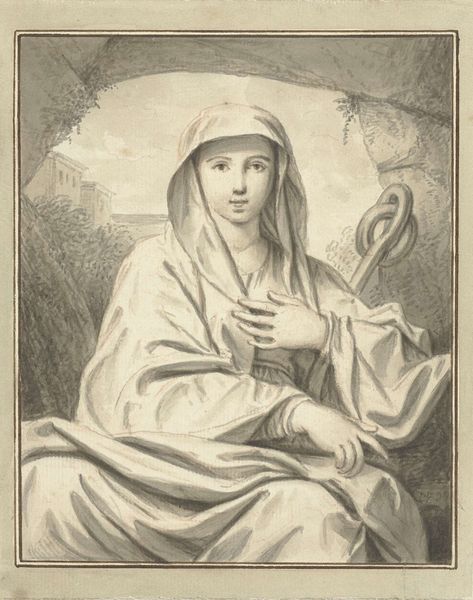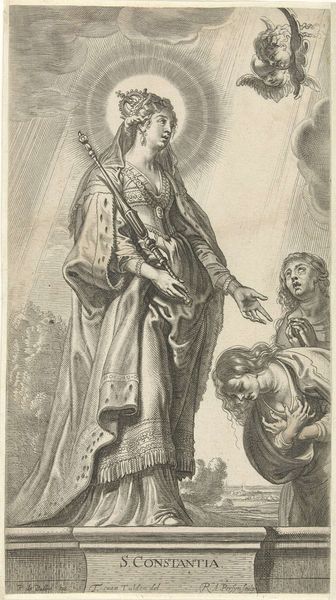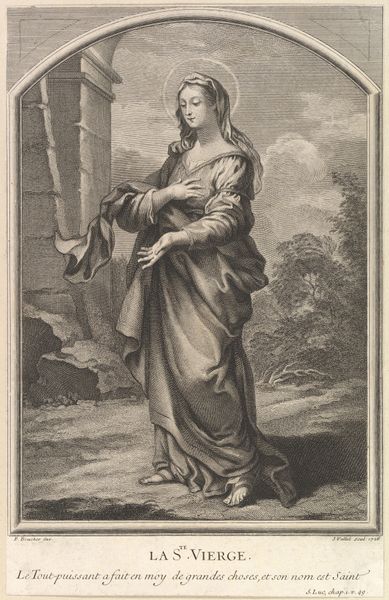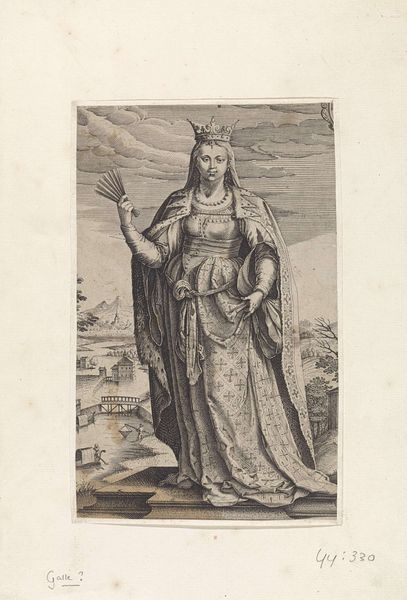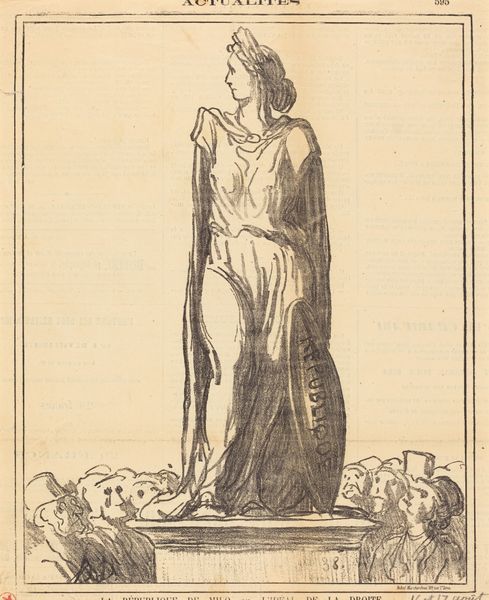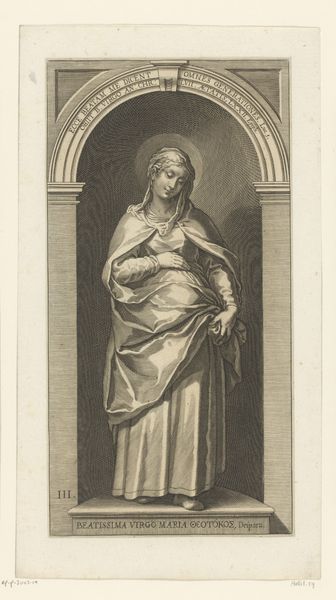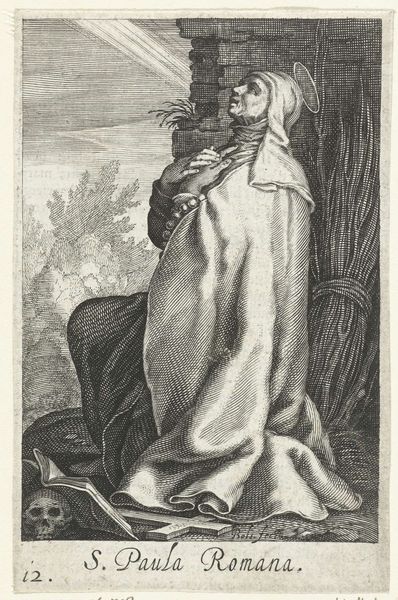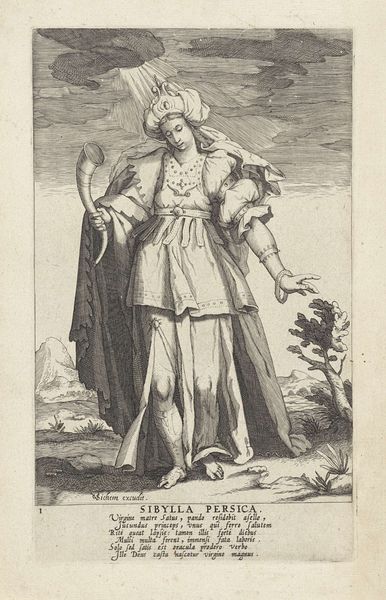
print, engraving
#
portrait
#
baroque
# print
#
figuration
#
history-painting
#
engraving
Dimensions: height 266 mm, width 159 mm
Copyright: Rijks Museum: Open Domain
Editor: This is "Portret van Hildegard," a 1701 engraving by Romeyn de Hooghe. It's striking how formal the composition is, yet the detailed engraving gives it a delicate quality. How do you interpret this work, particularly given the context of its creation? Curator: This portrait offers us a glimpse into the intersection of gender, power, and historical narrative in the early 18th century. While seemingly a straightforward depiction, we should consider what it means to represent Hildegard, likely a reference to the medieval Benedictine abbess Hildegard of Bingen, a powerful and influential woman in her time. The inclusion of figures behind her hints at narratives. Do you see the angel with the cross? The artist frames her within a carefully constructed historical context, a purposeful choice meant to invoke specific associations of female authority. Editor: I do see the figures! It makes her less of a standalone portrait and more of a statement. Are you saying it challenges the typical portrayals of women during that era? Curator: Precisely. The choice of depicting Hildegard at all, during a time when women’s roles were largely confined, can be viewed as a subtle act of resistance. Who gets remembered, who gets a portrait, who shapes history? These were very political questions then, as they are now. By reviving the image of a powerful, intellectual woman from the past, De Hooghe implicitly critiques the limitations placed upon women in his own society. Editor: So it's not just a historical piece; it's a commentary on contemporary social dynamics? Curator: Absolutely. It compels us to consider the ongoing struggle for female empowerment throughout history and how historical figures can serve as symbols for contemporary battles. Editor: I never thought of it that way. It really opens my eyes to the layers of meaning embedded in historical portraits. Curator: Exactly! Analyzing artworks this way is crucial; they can act as portals into understanding cultural beliefs and struggles throughout time.
Comments
No comments
Be the first to comment and join the conversation on the ultimate creative platform.

